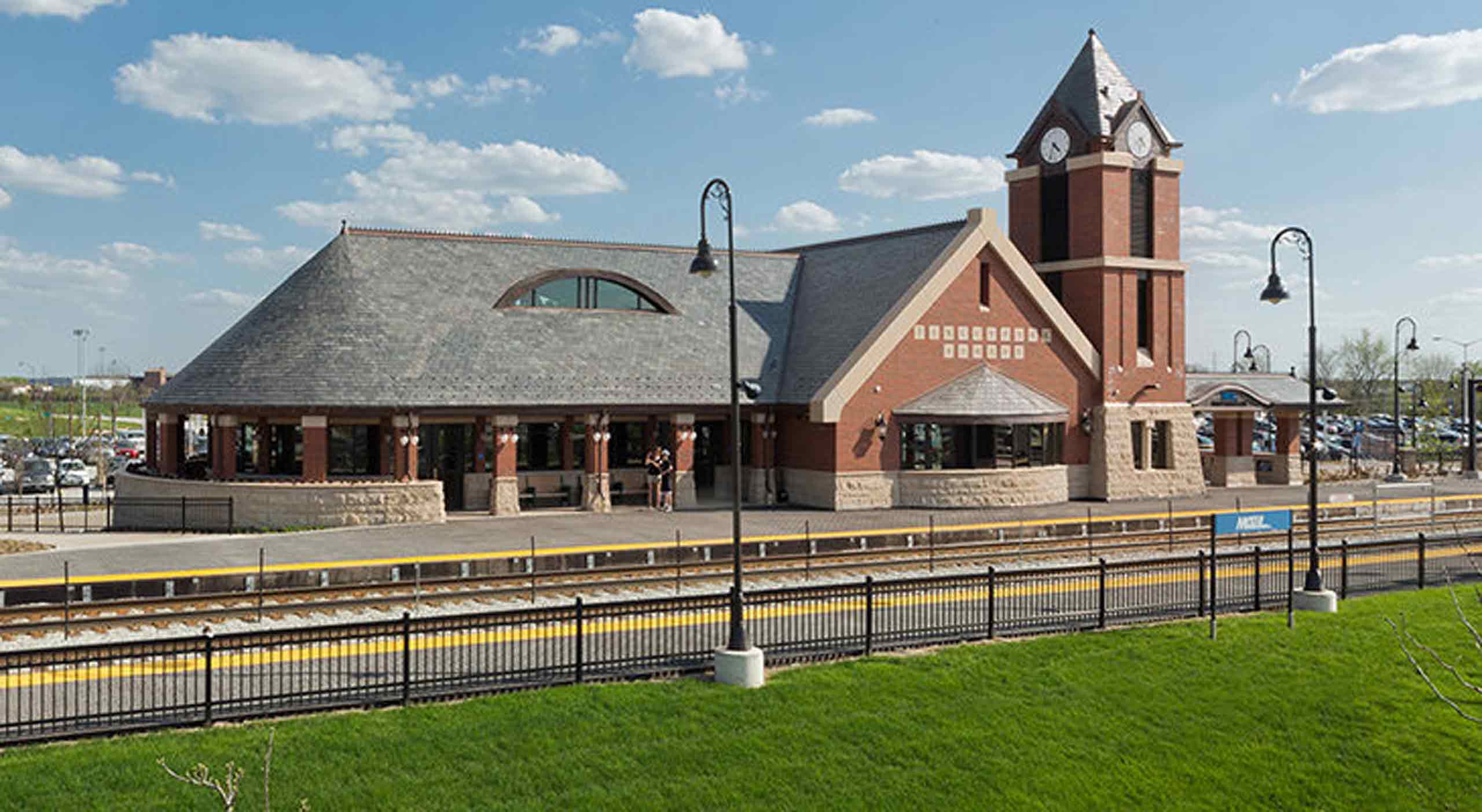
The right architectural design can make the contemporary train station so much more than a place to wait.
Every day, hundreds of thousands of commuters across the nation drift through train stations to catch a ride to work. Despite the growing popularity of commuter services, many train stations are in a sorry state of disrepair. Commuters see these stations as nothing more than a place to take shelter from the rain or cold while they wait. Community members ignore the stations or, even worse, complain that the facilities cast the community in a negative light.
The train station can be so much more than a place to wait—it can present a positive image about the community to the outside world, add to local economic development efforts, and enrich a community’s civic value.
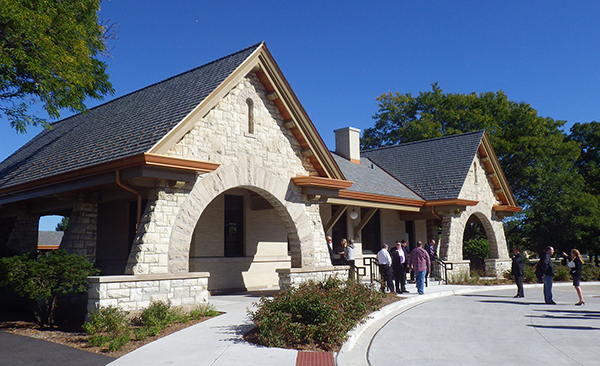
Train Station Design Derailed
A hundred years ago, railroads and architects put a great deal of effort into the design of train stations. As a community focal point, the station linked the town and the outside world. It symbolized progress, while giving its community an identity. One example is the Village of La Grange’s recently rehabilitated Stone Avenue Train Station, built in 1901.
Over time, things changed. Architects—and the railroads that commissioned them—cut corners; they ignored the station’s linking potential. Boxes replaced intriguing shapes. Metallic colors replaced warmer hues. Cities and villages, insensitive to community spirit, tossed the boxes down with little planning, thus bruising the station’s and the service’s reputation. The station became a place to buy a ticket and wait for a train. And that’s all. No symbolism. No identity. Open at 5:00 a.m. Close at 1:00 p.m.
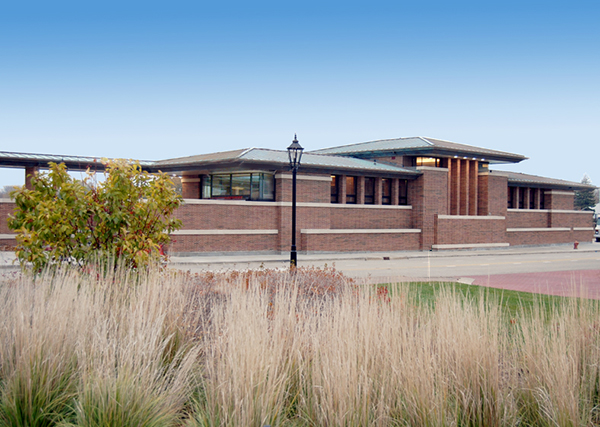
Community Identity
Commuters will remember the train station with the strong design . . . and the station with the wrong design.
The station is the face a community displays to all those on the train. If the station is attractive, commuters draw positive conclusions about the community. It may even encourage them to investigate the area. If, on the other hand, commuters see an unkempt, shed-like building, they will form a negative opinion about the community.
And then there are the community members—just because they don’t ride the train doesn’t mean they don’t pay attention to the station. They want something that captures the values of their community. Shoddiness is never one of those values, despite some stations that suggest otherwise. The well-designed station gives citizens a sense of pride; it acts a symbol of unity. For instance, the Tinley Park Oak Park Avenue Station captures what former Mayor Ed Zabrocki called the village’s “old-world charm.”
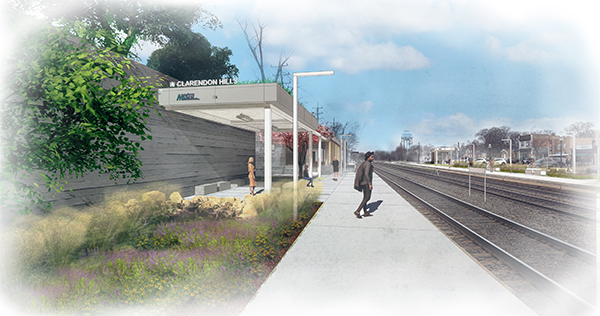
A Stimulant for Growth
By reestablishing the train station as a community focal point, cities and villages can inspire growth. New stations often sprout on the fringes of up-and-coming areas. Other times, they appear more toward the center of an urban area partially or totally developed. In either case, the appropriate station will inspire change: commercial and housing developments in the former scenario and rejuvenation in the latter.
An example is the Village of Clarendon Hills, Illinois, which is planning a downtown revitalization highlighted by streetscape improvements and a new train station. The station, which supports the village’s focus on outdoor spaces and sustainability, features outdoor waiting areas and a green roof. The village anticipates that the station will become a new entry point that promotes economic development by attracting more businesses and residents.
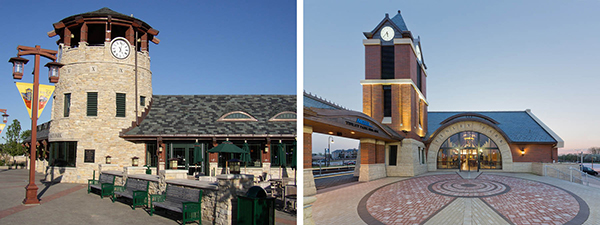
Another Chicagoland suburb, the 150-year old Village of Tinley Park, exists because of the rail. Named after its first railroad station agent, the village developed a master plan with a train station as a focal point. The Oak Park Avenue Station (completed 2003) inspired a community transformation and even earned a spot on the American Institute of Architects’ “150 Great Places in Illinois” list. Ten years later, the new 80th Avenue Station further reinforced the village’s rich rail tradition.
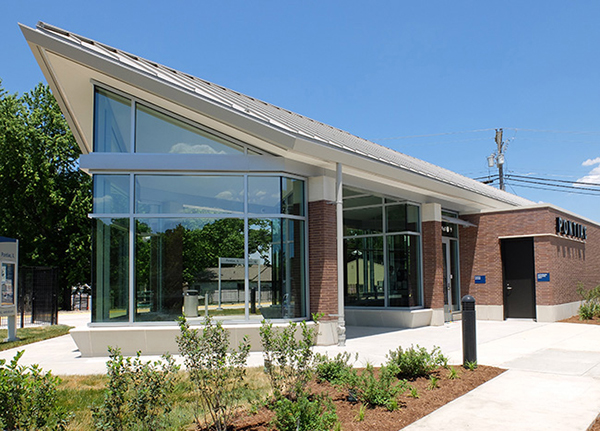
The Benefits of Strong Design
“Let’s go there!” Not the first thing to come to most people’s minds when they see the typical train station. However, many rail providers are changing the game by establishing more inviting stations.
The community-sensitive station offers benefits to many: a place to stop and linger for the stressed, a piece of the past for the nostalgic (or a map to the future for visionaries), a sense of pride for neighbors, and a glimpse of what a town is all about for commuters.
And eventually, developers, retailers, and home buyers might just see that flower within the civic landscape and say, “Let’s go there!”
In my next post, I’ll break down the elements of a productive train station.
Contact us to learn more train station design or comment below to share your thoughts on this post.


